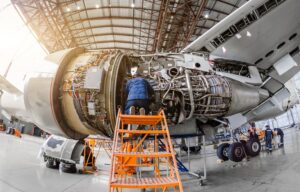Advancements in Aerospace Engineering
3 min read
From air travel to weather monitoring, satellite communications and space exploration, aerospace technologies expand the boundaries of human capability. Aerospace engineering drives innovation in propulsion systems, aerodynamics, avionics, structures, and materials to make flying vehicles and spacecraft progressively faster, farther, safer, and more efficient.
Innovative advances in aerospace continually enable new frontiers in aviation, atmospheric research, and humanity’s reach for the stars. Pursuing aerospace breakthroughs means nations also develop valuable technological capabilities benefiting additional sectors like renewable energy, computing, and transportation.
Lightweight, High-Strength Materials
One of the biggest challenges for aerospace engineers is reducing weight while maintaining exceptional strength and reliability. Using lightweight materials allows aircraft and spacecraft with better fuel economy, increased range, and greater payload capacities to be built.
In recent decades, advanced composite materials like carbon fiber reinforced plastics have steadily replaced heavier aluminum and other metals across many aerospace applications. Composites offer superior strength-to-weight ratios ideal for high-performance aerospace needs.
Composite prepregs made from carbon fibers pre-impregnated with thermoset resins provide an extremely strong yet lightweight solution for manufacturing aerospace components. According to the experts at Axiom Materials, these specialized composite materials allow for precise layering and curing into tailored configurations that optimize stiffness and strength in critical areas.
Beyond polymers, next-generation metal matrix composites and ceramic matrix composites also show promise for hot engine sections and hypersonic vehicles able to withstand extreme temperatures over 2000°F. Advanced composites allow building lighter, more fuel-efficient, and higher-performance aerospace vehicles.
Other cutting-edge materials seeing increasing aerospace usage include advanced superalloys, titanium aluminides and ultra-high temperature ceramics. These materials enable building jet engines and propulsion components able to withstand extreme temperatures, pressures, and stresses during operation.
Streamlined Design and Manufacturing
Besides new materials, modern computational tools also speed up and enhance the aerospace design process. Advanced simulation software allows engineers to virtually model and test new vehicle designs down to the smallest details before any physical prototyping.
Engineers precisely analyze aerodynamics, structural characteristics, propulsion variables, avionics, and other key factors rapidly through computational fluid dynamics simulations and finite element modeling. Digital twins capture every aspect for full virtual evaluation. This computational approach expedites the typical design cycle while identifying optimal configurations for peak performance before resource-intensive manufacturing.
Electrification and Propulsion Advancements
Futuristic electric and hybrid-electric propulsion systems are another major area of research promising greener, quieter air vehicles. While many challenges remain regarding energy storage and motor efficiency, electric aircraft would reduce aerospace’s reliance on polluting fossil fuels.
For long-range aircraft, sustainable aviation fuels derived from biological sources like plants or algae could supplement conventional petroleum jet fuels. Sustainable fuels produce fewer emissions, like carbon dioxide and hazardous pollutants, compared to typical jet-A.
For rocketry, NASA and others continue researching reusable launch vehicles, spacecraft that take off and land like aircraft, advanced composite and metal propellant tanks, and safe engineering solutions for nuclear thermal propulsion.
On the frontier of atmospheric flight, engineers pursue high-speed scramjet designs for hypersonic air travel over five times faster than sound. Breakthroughs in materials, aerodynamics and propulsion could revolutionize global transportation with hypersonic airliners crossing oceans in just a few hours.
Conclusion
Overall, the aerospace industry relentlessly advances our capabilities to explore, understand and overcome the challenges of atmospheric and space environments. New materials, manufacturing techniques, propulsion technologies and computer-augmented engineering lead to aircraft and spacecraft achieving unprecedented speed, altitude, range, and safety for both piloted and autonomous missions.
As aerospace innovations evolve, society benefits through applications in national defense, improved weather forecasting accuracy, enhanced navigation and telecommunication services, increased access to space exploration, and possibly even ultra-fast hypersonic air travel one day. The frontier of aerospace engineering promises amazing possibilities for our airborne and spacefaring future.






